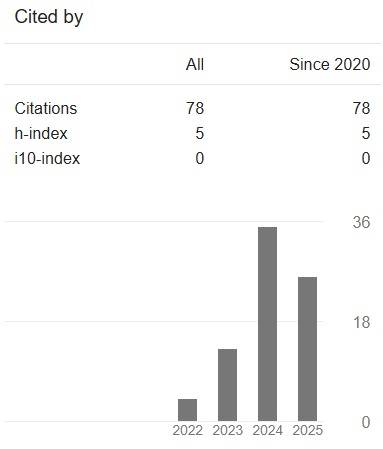Automotive Paint Production Line Blistering Improvement and Approach
DOI:
https://doi.org/10.24191/jaeds.v2i1.48Keywords:
Blister, Automotive paint, Paint shop, Automotive production, Paint defectAbstract
Painting the body and other elements, such as the wing or bonnet, is one of the costliest aspects of vehicle manufacturing. Surprisingly, the painting could cost even more than the body itself. The high expenses are due to the processes involved in the painting process rather than the machines used in the paint shop. From this perspective, it is evident that automobile makers constantly monitor the painting process to avoid any deviations from the desired outcome. Therefore, this paper aims to investigate the impact of blisters, one of the most common painting faults, and offered suggestions for improvement. The Ishikawa diagram was referred to measure the blister root cause. A few possible root causes were derived and then study to create a trial. The trial will show the actual result needed for the production team in order to tackle blistering issue. The setup for the painting process requires the optimal adjustment of different parameters such as humidity, temperature and the consistence of the lacquer itself. To eliminate the blister and other paint shop defect, a proper guideline and proper maintenance of the paint shop itself is really needed. While for long term solution is to have a new build up paint shop which equips with all the current technology such as the robot spray and eliminate too much rework on the unit before top coat spray. From the present analysis, it can be summarized that the major root cause of blister is the air trapped and sweat of the operator during the preparation process.
Downloads
References
R. L. Gregory, Eye and brain: The psychology of seeing, 5th ed. Princeton, New Jersey: Princeton University Press, 2015.
R. Volti, Cars and Culture: The Life Story of A Technology, 1st ed. Baltimore, USA: JHU Press, 2006.
M. Minnaert, The nature of light and colour in the open air. USA: Courier Corporation, 2013.
M. F. R. Jamaluddin, "Characteristic Studies on Types of Paint Spray for Automotive Parts in Small and Medium Industry," Doctoral Dissertation, Universiti Tun Hussein Onn Malaysia, 2015.
S. Croll, "Overview of developments in the paint industry since 1930," in Modern Paints Uncovered: Proceedings from the Modern Paints Uncovered Symposium, 2007, pp. 17-29: Getty Conservation Institute, Los Angeles, CA, USA.
R. Schwalm, UV Coatings: Basics, Recent Developments and New Applications, 1st ed. Netherlands: Elsevier, 2006.
A. Hofland, "Alkyd resins: From down and out to alive and kicking," Progress in Organic Coatings, vol. 73, no. 4, pp. 274-282, 2012.
J. L. Rivera and T. Reyes-Carrillo, "A life cycle assessment framework for the evaluation of automobile paint shops," Journal of Cleaner Production, vol. 115, pp. 75-87, 2016.
S. M. Mahajan, A. V. Mayur, N. M. Pratiksha, and V. P. Sneha, "Review on automotive body coating process," International Journal of Engineering Management Research, vol. 9, no. 2, pp. 103-106, 2019.
N. I. I. R. Board, Modern Technology of Paints, Varnishes and Lacquers, 2nd ed. India: Asia Pacific Business Press Inc., 2007.
H. A. Shelton, "The development of an accelerated weathering test for motor vehicle finishes," Transactions of The IMF, vol. 43, no. 1, pp. 179-185, 1965.
V. Curcio, Henry Ford. Oxford University Press, 2013.
S. K. Ghosh, "Functional Coatings and Microencapsulation: A General Perspective," in Functional Coatings: by Polymer MicroencapsulationGermany: Wiley‐VCH Verlag GmbH & Co, 2006, pp. 1-28.
N. Solomon and I. Solomon, "Paint blistering affects quality of finished products," Engineering Failure Analysis, vol. 92, pp. 44-49, 2018.
C. K. Schoff, "Automotive Coatings Defects Part 1: In-Plant and Field Defects," in ASTM Committee D-1 100th Anniversary Symposium, Philadelphia, PA, 2002, pp. 34-39: JCT Coatings Tech.
X. Jin, W. Bi, L. Wang, and H. Qian, "Root cause analysis of pinhole defects on painted galvanized steel panel," Engineering Failure Analysis, vol. 115, p. 104598, 2020.
F. J. Maile, G. Pfaff, and P. Reynders, "Effect pigments—past, present and future," Progress in Organic Coatings, vol. 54, no. 3, pp. 150-163, 2005.
R. B. Weimer, D. M. Wright, and T. Hodgins, Paints and polymers, 1st ed. (Handbook of Trace Evidence Analysis). New Jersey, USA: John Wiley & Sons, 2021, pp. 157-218.
M. Colledani et al., "Design and management of manufacturing systems for production quality," CIRP Annals, vol. 63, no. 2, pp. 773-796, 2014.
R. Dietrich, "4 Paint failures and their analytical approach," in Paint Analysis Hannover, Germany: Vincentz Network, 2021, pp. 54-110.
B. Sproull, The Problem-Solving, Problem-Prevention, and Decision-Making Guide: Organized and Systematic Roadmaps for Managers, 1st ed. New York: Productivity Press, 2018.
A. Houston and S. L. Dockstader, "A Total Quality Leadership Process Improvement Model," Total Quality Leadership Office Arlington VA, Virginia, USA1993.
M. Samanta, Lean Problem Solving and QC Tools for Industrial Engineers. New York: CRC Press, 2019.
V. Hotea, J. Juhasz, and C. Bivolaru, "Considerations on coating of surfaces by electrostatic painting," Scientific Bulletin Series D: Mining, Mineral Processing, Non-Ferrous Metallurgy, Geology and Environmental Engineering, vol. 33, no. 2, pp. 13-19, 2019
Downloads
Published
How to Cite
Issue
Section
License
Copyright (c) 2022 WAN AZMI BIN WAN HAMZAH, S.Z.A Sakinah, J. Alias, N.N.M. Zawawi

This work is licensed under a Creative Commons Attribution 4.0 International License.









